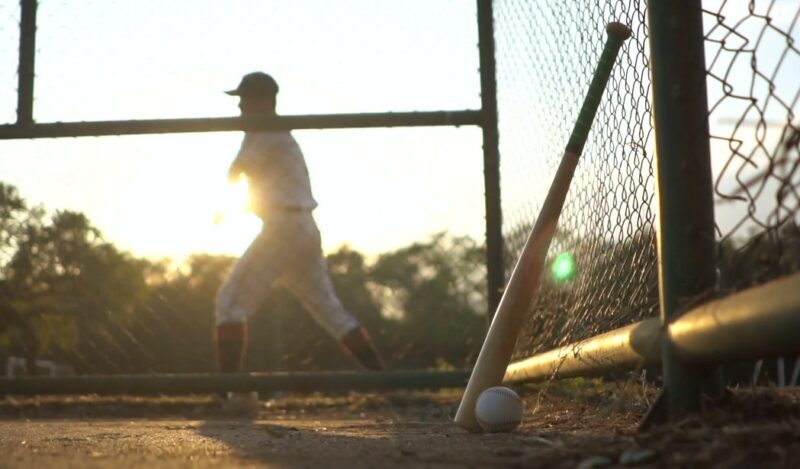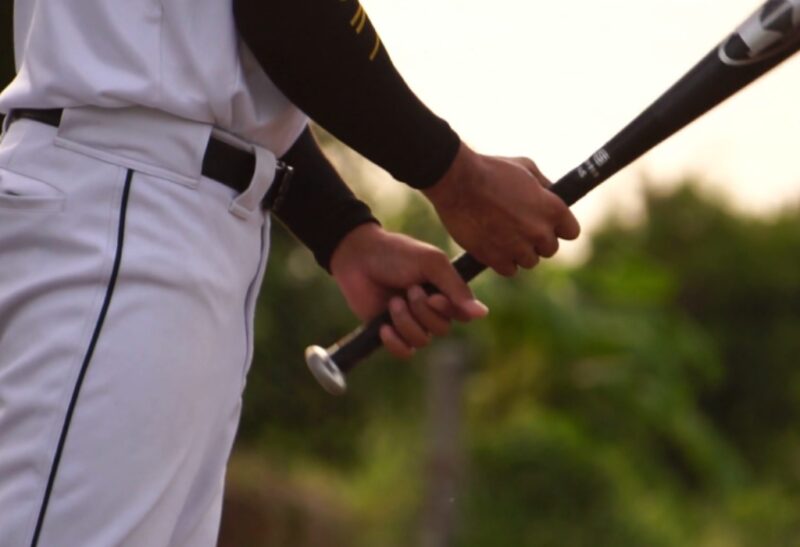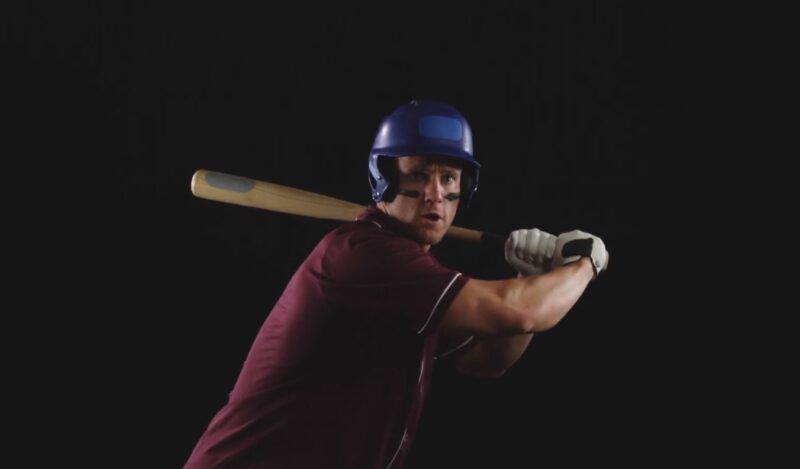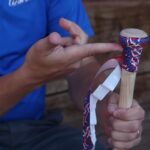The sights, the sounds, the thrill of a well-struck ball soaring into the outfield – these are hallmarks of both softball and baseball. At the heart of these great American pastimes lies a crucial instrument: the bat.
But did you know that the softball bat and the baseball bat are not interchangeable? Though they might appear quite similar to the untrained eye, these two types of bats are distinct in many ways, influencing the style, strategy, and dynamics of their respective games. Let’s delve into the intriguing world of softball and baseball bats and examine what sets them apart.
The Anatomy of Both Bats
The softball and baseball bat share some fundamental elements. Both are traditionally made from wood, but contemporary versions also feature aluminum or composite materials. Each bat consists of a handle (the thinner end the batter grips), a barrel (the thicker, hitting portion), and a knob at the handle’s base to prevent slipping.
While these are the basic components, the dimensions, and materials used vary significantly. Softball bats tend to be lighter, often made from composite materials like carbon fiber, making them more flexible and easier to swing. Baseball bats, conversely, are typically heavier and made from wood (especially in professional leagues) or aluminum, promoting durability and power.
Length and Weight Considerations

Bat length and weight are crucial considerations for both sports, but the dimensions differ notably between the two. Baseball bats are generally longer, ranging from 24-34 inches in youth leagues and extending up to 42 inches in professional baseball. Softball bats, on the other hand, range from 24-34 inches for all ages.
Weight also varies. Baseball bats can weigh between 17 and 36 ounces, with professional players often opting for the heavier end of the spectrum. Softball bats weigh between 18 and 30 ounces, reflecting the need for speed and control over raw power in the sport.
Barrel Diameter and Bat Speed
Barrel diameter and bat speed are intertwined. Softball bats have a larger barrel diameter – typically 2 ¼ inches, while baseball bats vary from 2 ¼ to 2 ⅝ inches in youth leagues and 2 ¾ inches in high school and collegiate play.
The larger barrel diameter of softball bats lends itself to faster swing speeds, which is critical for hitting the larger, slower-moving softball. Baseball bats, however, require the ability to hit a smaller, faster pitch; therefore, they prioritize precision over speed, and a narrower barrel helps with this.
Bat Performance Standards

Softball and baseball bats must adhere to distinct performance standards. For baseball, BBCOR (Batted Ball Coefficient of Restitution) is the standard for high school and collegiate play, limiting how much a ball can rebound off a bat to ensure player safety and game consistency.
Softball uses the ASA (American Softball Association) standard, regulating factors like bat performance, length, weight, barrel diameter, and grip. Different leagues may require different certifications (such as USSSA or ISA), so always confirm with your league.
Swing Mechanics and Bat Control
Swing mechanics and bat control also differ between softball and baseball due to bat characteristics. Softball players often use a ‘slap hitting’ technique, which involves a running start to the swing, facilitated by the bat’s lighter weight. Baseball players use a more stationary technique, focusing on strength and precision.
Hitting Power and Sweet Spot

The ‘sweet spot’ on a bat is that optimal area that generates the most power when hit. Because softball bats are lighter with a larger barrel, they have a bigger sweet spot, accommodating the bigger ball and more varied pitch angles in softball. Baseball bats have a smaller sweet spot, requiring more precision to hit the smaller, faster-moving ball.
Pitch Speed and Bat Response
Pitch speed and bat response are closely related. With baseball pitches coming in significantly faster, baseball bats need to be sturdy and robust to withstand the impact, hence their heavier design. Softball pitches, while slower, come in a variety of spins and angles, and the lighter, more flexible softball bat aids in adjusting to these variations.
Durability and Longevity
Durability and longevity can depend on the material. Aluminum bats (common in baseball) are more durable and longer-lasting. Composite bats (frequent in softball) offer superior performance but may require more careful handling. The more intensive hitting in baseball can lead to more wear and tear, reducing a bat’s lifespan compared to softball.
Choosing the Right Bat for Your Game

Selecting the right bat depends on the player’s age, size, strength, and skill level. For young or novice players in either sport, a lighter bat may be more appropriate to foster control and skill development. As players mature and develop, bat weight and length can increase to optimize power. Always consult league regulations before choosing a bat.
Materials and Manufacturing Differences
The materials and the process used to manufacture baseball and softball bats also differ significantly. Baseball bats traditionally have been made from solid wood, typically ash, hickory, or maple. In modern times, aluminum and composite materials have become popular, especially in non-professional leagues.
Wooden baseball bats are carved from a solid piece of wood, making them naturally dense and hard. Aluminum bats are made by heating and molding the metal, creating a light yet sturdy piece of equipment. Composite baseball bats combine graphite, carbon fiber, and sometimes fiberglass and are known for their durability and improved performance over time.
On the other hand, softball bats rarely use wood. They are commonly manufactured from aluminum or composite materials, with the latter becoming increasingly popular due to their lightness and flexibility. This allows for faster swing speeds and greater control, accommodating the unique dynamics of the softball game.
Different Bat Technologies
In terms of technology, both baseball and softball bats have seen innovative developments over the years. In baseball, technologies such as BBCOR and MOI (Moment of Inertia) calculation have enhanced player performance and safety.
BBCOR measures the trampoline effect of a bat, aiming to standardize bat performance across different materials. MOI is the measure of the effort needed to swing the bat, which has led to better-designed bats with optimal weight distribution.
Softball bat technology has seen the introduction of double-wall construction, which involves two independent walls creating a spring-like effect upon impact. This design increases the ‘trampoline’ effect, leading to faster ball speeds off the bat. Another advancement in softball is the introduction of end-loaded bats, where additional weight is placed on the bat’s end, providing more power for the player.
The Influence on Player Technique
Beyond the physical differences and performance metrics, the distinctions between softball and baseball bats significantly influence player techniques. In baseball, due to the weight and length of the bats, players need to have solid mechanics to generate power. They need to focus on torque generated by their hips and the transfer of weight from their back foot to the front.
In contrast, with softball’s lighter, more manageable bats, players often utilize a more wrist-centric swing. The larger sweet spot also enables more varied hitting techniques, such as ‘slap hitting,’ where the batter makes a running start and hits the ball in motion.
Popularity and Evolution

The popularity of baseball and softball bats has evolved over the years, driven by changes in regulations, player preferences, and advancements in technology. In the earlier days of baseball, heavier, solid wood bats were the norm. However, with the introduction of lighter materials and better manufacturing techniques, players have increasingly opted for aluminum and composite bats.
Similarly, in softball, while aluminum bats were widely used initially due to their durability and lower cost, the increased performance offered by composite bats has led to their growing popularity in recent years.
In addition to maintaining a clean baseball glove, players who engage in the Diamond Duel between softball bats and baseball bats can play ball with confidence.
Final Words
Softball bats and baseball bats, while sharing basic elements, are beautifully tailored to their respective sports, influencing game dynamics and player techniques. Understanding these differences is crucial for any player looking to excel in either softball or baseball.
Next time you step onto the field, remember the bat you’re holding is more than a simple piece of equipment – it’s a testament to the rich and intricate nature of the game you’re playing. So, grip it tightly, swing it powerfully, and savor the satisfaction that comes from the crack of a well-hit ball.
In addition to maintaining a clean baseball glove, players who engage in the Diamond Duel between softball bats and baseball bats can play ball with confidence.







